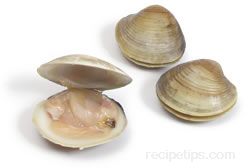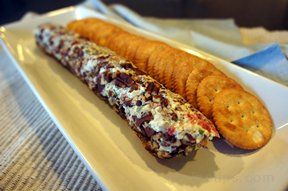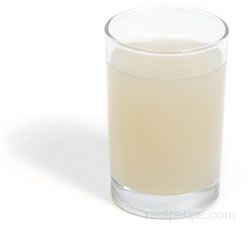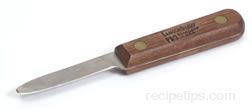Some of the common varieties of hard shelled clams include: Carpetshell (Carpet-shell, Palourde), Count-neck, Geoduck, Littleneck (Pacific Littleneck), Prairie (Warty Venus, Baby), Quahogs (Cherrystone, Atlantic Littleneck, Chowder, Large, Quahawg), and Razorshell (Razor, Jack-knife). Some of the common varieties of soft-shelled clams include: Belly, Long-neck, Manila, or Steamer.
To discuss a few of the varieties of clams, Geoduck clams are a soft-shell mollusk that can grow to sizes that exceed 5 pounds in weight. Often used in Asian food dishes, this clam can be sliced to be served as fried clams or for use in chowders. Littleneck clams are found in both an Atlantic or Pacific variety. The Atlantic Littleneck is the Quahog clam while the Pacific Littleneck is a west coast or Japanese variety of clam. Pacific Littlenecks are chewy-textured and most often served steamed, cooked, or added to chowders and pasta dishes. The Atlantic Littleneck or Cherrystone clam as it is also known, are basically the smaller versions of the Quahog clam. When the Quahog matures to its largest size it is commonly referred to as a Chowder or Large clam. Chowder clams may be tougher in texture so the slow cooking required for chowders is an effective method to tenderize the meat. Razor clams can be harvested on either the east or west coast of the U.S. Recognized by the sharp edges of the shells, the Razor clam provides a meat that is tougher in texture and is most often served as a steamed or fried clam.
Long-neck clams have a larger oval-shaped shell which has a gap on the posterior part of the shell, thus the reference to this variety as a "gaper" clam. Manila clams, which are also known as Asari clams, is a common Asian clam that is valued for its tender meat. With a shell that is elongated in shape, this variety of clam is sweet in flavor and is typically prepared as a steamed clam or a clam added to soups and stir-fried dishes. Steamer clams are a smaller soft-shelled variety of clam encased in a very brittle shell that remains partially open. Often served as a steamed, fried or sauteed clam, steamers are a clam that is also a good clam to use with pasta or in chowders.
To clean clams, soak them in salt water before opening and wash away and excess debris. Make sure that utensils, hands, and the meat of fresh clams when working with them, does not come in contact with the meat of cooked clams so no contamination occurs. When shucking (opening) clams, use a clam knife or some similar tool to be inserted between the two shell halves. It may assist the process of opening by placing the clams in the freezer for 15 to 30 minutes and then as they warm while opening, the clam's muscles relax allowing the shell to be pried apart more easily. Pry the clams apart over a bowl so the juice can be caught and retained for use in a broth or as clam juice. A quart of shucked clams, which will require approximately 8 quarts of clams in their shell, will typically provide 2 to 3 cups of chopped clams.
If fresh clams or shucked clams are to be frozen prepare them properly for storage. Fresh clams should be washed thoroughly to remove excess materials. Freeze unshucked fresh clams as soon possible after harvesting or purchase in order to reduce the damage caused to the tissue of the meat. The fresh unshucked clams should be placed in an airtight bag or container within their own water if possible. Shucked clams that have been removed from the shell can also be frozen in airtight containers and stored in the freezer.














